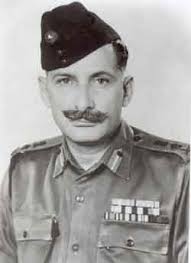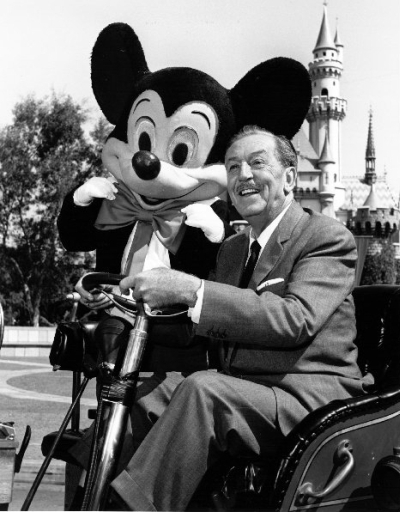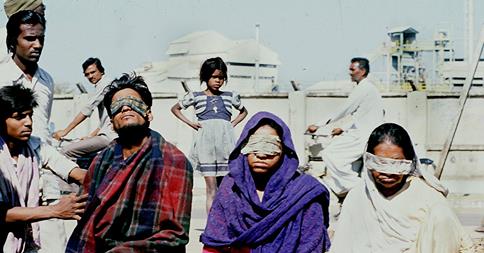According to the Gregorian Calendar Makar Sankranti is celebrated every year on 14th January. There are only rare exceptions when the festival is celebrated on 13th or 15th January. Most of the other Hindu festivals fall on different dates.
 Til Gul Ladu
Til Gul Ladu
 Gul Poli
Gul Poli
It is a festival to celebrate harvest. In many parts of the country this harvest festival is celebrated with lot of activities. The great thing about Hindu festivals is that they promote social interaction. Makar Sankranti is no exception. In Maharashtra the festival is celebrated by exchanging sweets. Halwa and Til Gul Ladu are particularly prepared on this day. Gulachi Poli which is a delicacy a served during lunch. Gulachi Poli is a traditional Indian bread-chapati/paratha with a difference that there is filling of ground till, besan(gram flour) and lot of pure ghee. People greet each other with ‘Til Gul Ghya, Ani Goad Goad Bola’- promoting better interpersonal relationship. Haldi Kunku is distributed among married women. The gifts of utensils, clothes and sweets are exchanged.

Makar Sankranti is also an auspicious occasion on which Sun God is revered. Millions of people take bath in Holi Rivers. Ganga Sagar where river Ganges flow into the Bay of Bengal is particularly popular.

In Tamil Nadu the festival is known as Pongal and is celebrated by preparing lots of sweets and Tamilian dishes. These are served on planten leaves. Another marked feature of this festival is that people fly kites in open spaces. Very decorative and colorful kites are made for the occasion. It is a wonderful festival where people participate with the enthusiasm and gusto.



Thanks for reading.
Patriotic Saint
12th January is a very important day in India. This is celebrated as National Youth Day. Swami Vivekananda who is also known as Patriotic Saint was born on 12th January 1863. He was the Chief Disciple of Ramakrishna who was a well known saint in Bengal during 19th century. Swami Vivekananda is credited with founding of Ramakrishna Math and the Ramakrishna Mission. The latter has spread throughout the country and is engaged in learning many educational institutions.

Narendranath Datta (the real name of Swami Vivekananda) was born in an aristocratic Bengali family of Calcutta. His father Vishwanath Datta was an Attorney at the Calcutta High Court. His mother Bhuvaneshwari Devi was a devout house wife. The progressive rational thinking of Narendra’s father, and the religious temperament of his mother helped shake his thinking and personality.

Swami Vivekananda was instrumental in the introduction of The Indian philosophies of Vedanta and Yoga to the western world. He was a great public speaker. His confident participation in the Parliament of the World’s Religions in Chicago in 1893 brought him laurels. The beginning of his speech by addressing Sisters and Brothers of America… is remembered by religious leaders of various countries even today. He was considered the most effective and influential speaker at that meeting.

Swami Vivekanada’s teachings emphasize human development. According to him each individual has a soul potentially divine. The goal to manifest this divinity should be prime for everyone. This is possible through devotion to one’s duty. This is possible by mental discipline or prayers. Contemplation on human soul is also very relevant. This is the very essence of any religion. Rituals, dogmas, books or temples or forms are just secondary details.

Swami Vivekanada’s influence on Hinduism is paramount. According to him, Love and respect towards the Motherland was the solemn duty of every citizen. He is respectfully known as the Patriotic Saint.
Thanks for reading.
Film Actress Nanda
One of the most expressive faces in Hindi Films was that of Nanda. Her face had a remarkable child like expression. In fact, she started to work in films as a child artist. Her father had died at the young age of 41 so she started working in films as a child artist to support her family.


In 1956 her uncle V. Santaram one of the famous producer of his time gave her a big break by casting her in Toofan Aur Diya in the year 1956. The film was a big hit. Thereafter Nanda featured in films like Bhabhi, Kala Bazar and Dhool Ka Phool.


In the year 1959 she played the title role in L. V. Prasada’s Choti Behen the movie was a big hit. It made her a star. Thereafter she got lead roles in Hum Dono and Teen Deviyaan against popular star Dev Anand. She also got an opportunity to play the lead role in B. R. Chopra’s Kanoon in 1960. A good human being at heart, she is said to have signed as many as 8 films with Shashi Kapoor when he was not a successful actor in Hindi Films. However their film together ‘Jab Jab Phool Khile’ was a big hit. This film played a significant role in shaping and bringing success to Shashi Kapoor as a star in Hindi Films.


We remember her on her birthday that is January 8th. Appreciating all the good work that she had done for Hindi Films.

Thanks for reading.
Indo Pakistan War of 1971.
16th December happens to be an important day for our Nation. It was on 16th December 1971 that the instrument of surrender was signed by the Unified Commander of Pakistan Armed Force’s Eastern Military High Command. The then Prime Minister of India Shrimati Indira Gandhi asked the Chief of the army staff General Manekshaw to go to Dhaka and sign the instrument. However the General said that the honor should go to his Army commander in the east, Lieutenant General Jagjit Singh Aurora.


The Indo-Pakistani War of 1971 was the direct military confrontation between India and Pakistan during the Bangladesh Liberation War in 1971. Indian, Bangladeshi and international sources consider the beginning of the war to have been Operation Chengiz Khan, when Pakistan launched pre-emptive air strikes on 11 Indian airbases on 3 December 1971, leading to India’s entry into the war of independence in East Pakistan on the side of Bangladeshi nationalist forces, and the commencement of hostilities with West Pakistan. (Source Wikipedia)

It was one of the shortest wars between two countries. it lasted only 13 days. Indian Bangladeshi and international sources consider that Lt. General Jagjit Singh Aurora had meticulously planned the operation.

At the outbreak of the war on 3 December 1971, as the GOC-in-C of the Eastern Command, Aurora oversaw the Indian ground forces into battle in East Pakistan. In a meticulously planned operation, forces under Aurora’s command formed numerous small combat teams and launched a four-front attack with the strategy of confronting and defeating the Pakistani forces on selected fronts, while bypassing Pakistani forces on others. In under two weeks, his forces advanced from the Indian border to capture Dhaka, the capital of East Pakistan. (Source Wikipedia)

The Unified Commander of Pakistan Armed Forces’s Eastern Military High Command, Lieutenant General Amir Abdullah Khan Niazi was forced to sign an unconditional Instrument of Surrender. The photograph of Niazi and Aurora at the signing of the Instruments of Surrender became an iconic image of the wa,[7] with The Guardian describing the scene as “the glum Pakistani officer bowed over his signature. The turbaned figure beside him, showing not a scrap of elation”.[8] The 90,000 Pakistani troops under Niazi’s command surrendered to General Aurora as prisoners of war.[2] Pakistan lost almost 57,000 square miles (150,000 km2) of its territory and 70 million of its people to the newly formed nation of Bangladesh. (Source Wikipedia)
Many of our officers and soldiers lost their lives. On this day we pay our tribute to all of them.

 Lieutenant General Jagjit Singh Aurora General Sam Manekshaw
Lieutenant General Jagjit Singh Aurora General Sam Manekshaw
Thanks for reading.
Walter Elias “Walt” Disney.
Walter Elias Disney was an American Business Magnate and a filmmaker. But he was one of the greatest Cartoonists this world has ever seen. It is particularly true when we are thinking of one cartoon. When we are thinking of one character created by a cartoonist which has survived more than a century. The character is. Mickey Mouse.


Of and on Mickey Mouse makes fashion statements on t-shirts, sweat shirts and children pajamas. It appears that the character is going to live another century. Walter also created Donald duck and Goofy. These are also good but nothing to beat Mickey Mouse. He won 22 academy awards including a record of four in just one year. It gave him the honor of being one with maximum nominations (59) and 22 awards.


Disney Land theme parks in US, Japan, France and Hong Kong are the places which attract tourists from all over the world. If the family travels with children there is no way that they could miss the Disney lands if they are visiting that particular country.

He died on December 15 1996 from longue cancer in California. He had created a large number of animated shorts and future films. The company created these parks and animation studio which bears his name. At times we think how could a cartoonist create a cartoon that transcends the limits of time and space. What Shakespeare is to drama and literature, Walt Disney is to entertainment particularly for the children.

Thanks for reading.
Guru Shishya Parampara 2
Today, I will talk to you about the qualities of a great Guru in the context of present day teaching. While in our country, our Education System seems to have drifted away from the traditions, some of the teachers in the US are following our traditions.

The Guru-shishya parampara always emphasized that the Guru should also be a mentor. It meant that he/she does not just give lectures. But the classroom sessions are made interactive and participative. Here in India, we see that most college students have to rely on private classes. It is not only unnecessary, but also wasteful. Students lose the time spent in the college. At the same time College Lecturers are also unhappy because they don’t find devoted students.

Now I will describe how a good and passionate teacher is rated in a typical US school or college. The teacher ensures that the class is interesting. He/she does not stick only to the text, but gives examples from life to ensure a clear understanding of the subject. The teacher is always willing, and in fact wanting to help. The teacher displays deeper understanding and carefully listens to the students. Polite and human, the teacher ensures that everyone in the class understands the material before he/she is subjected to any kind of tests. The message is given repeatedly that Teacher should never bring personal problems to school. The teacher should have great respect for the students.

At the same time, the teacher motivates the students to come to the class on time. They are mentally prepared to learn, in fact eager to learn, and to respect each other. Students must listen when another student is talking. Of course there should be no cross talking during the class. The teacher repeats to the students, never say I can’t. Further, the teacher reassures them not to be afraid to say “I don’t understand”.
I hope that the new government and the HRD Minister will take suitable steps to ensure that we go back to our tradition.
Thanks for reading.
Guru Shishya Parampara
The Education System in our country was based on Guru-Shishya Parampara (tradition). Each individual who was educated in this tradition was able to think for himself/herself. However, The British did not want this system to continue. They only wanted followers who blindly obeyed their diktat. They needed manpower in administration. So they disbanded this system. The present education system is based on recommendations of Lord Macaulay who felt it necessary to tame the citizens into becoming unthinking followers. This system continues till today.

The biggest problem of our current education system is that even though students have great imagination, extensive knowledge, they have difficulty to express themselves. They lack courage and confidence. In complete contrast, the Guru Shishya Parampara creates a bond between the teacher and the disciple which transcends the traditional teacher student relationship. The Guru acts as a mentor ensuring that each of his Shishya feels free to ask any questions which he considers duty bound to explain.

As a mentor, the Guru considers it his duty to ensure that the future of Shishya is well protected. The Guru ensures that Shishyas develop the capacity to think for themselves. Further, they inculcate the necessary skills to deal with each other and conduct themselves elegantly among people.

Great knowledge of our scriptures can be disseminated properly by bringing back the system even though in a new modern avtar.

The biggest challenge for the Human Resource Development (HRD) Ministry is to give proper orientation to the teachers. Besides, the number of students in a class should be between 10 to 15 but never more than 20.

Thanks for reading.
Voice Culture & 2015
Voice culture is training to enhance the quality of your voice. It also develops the ability to speak each and every word clearly, in any language. Verbal communication has assumed greater importance in the last few years. The changing business and telecom environment has made it necessary that we speak more effectively. The efficacy of speech has assumed centre stage. In the coming year 2015 it will become imperative that we all improve our verbal communication skills. That will only enable us to create an impact on the social media sites.

What is Voice Culture? How do we go about it?
Voice is produced by the breath that is released from the lungs. The breath strikes the vocal cord and sound is produced. The sound travels in the cavities in the mouth and cavities in the nose. Resonance is added and sound becomes rich. But it is only sound not the words. The words are created by the speech organs.
5 speech organs that are critical to the creation of words in any language are: jaw, tongue, teeth, lips and palate. Any person whose speech is not clear is not using one or more of the speech organs in a manner in which these should be used.

Let us consider example of a flute player (Indian tradition flute). Flute is just a hollow tube. There is one hole for the flute player to blow. Other holes are for manipulating the fingers for producing various notes. We find that with the simple equipment some expert flute players are able to mesmerize their audience with exquisite music.

As compared to the flute our speech box is a fabulous musical instrument. Just as the success of the music produced by the flute depends on the expertise with which the musician plays the flute, the speaker can hold his/her audience spell bound with effective speech. It is necessary that the speaker must play his/her musical instrument with an expertise.
Voice culture enables you to acquire the expertise of using your musical instrument (the voice box).
Thanks for reading.
Bhopal Gas Tragedy
It happened on 3rd December 1984 at the Union Carbide India Ltd. pesticide plant in Bhopal, Madhya Pradesh. 30 years have passed; but the tragic remains of the disaster continue to create anguish among thousands of families. Even after 3 decades survivors suffer from various elements and deformities. 3500 lives were lost immediately. About 25000 families continue to suffer. The Bhopal Gas Peedit Sanghatan (Bhopal Gas Victims Organization) continues to fight an unending legal battle.
It is important to remember the day. It is important for such plants to take all the necessary measures that such a huge tragic disaster does not recur. Many such plants though originally built away from the populated places have now come within the thick of population. It is time that the authorities and such manufacturing units contemplate about shifting the locations.








Let us all pray for the families.
Enemies of Happiness – Greed
Yet another enemy of happiness may have entered in the mind of some of us. This is greed. It keeps on growing unabated when not controlled. The end result invariably is a disaster. It can be greed for money, it can be greed for power or fame, respect, sex or even attention. Greed for food is also not uncommon. Greed has a tendency to grow faster when you achieve more. Unfortunately greedy people lose the perspective. If the human wanted more for happiness, it may be considered normal. But greed invariably makes you unhappy. In this case the desire is never controlled.

In fact one can be rich without being greedy. Making more money should not be the objective. Enjoying what you have and of course aspiring for more can be a legitimate goal of successful people in a competitive world. But greed does not allow you to enjoy what you have. It only reinforces your anguish on what you don’t have.

The great English Victorian explorer – Sir Richard Frances Britten once said: ‘conquer thyself till thou have has done this, thou art but a slave; for it is almost as well to be subjective to another’s appetite as to thine own.’

Shakespeare the great dramatist discussed these characteristics of human mind in great detail when he created the character of his play Macbeth by the same name. Hunger for more power keeps on increasing until Macbeth is pushed to the wall of disaster.

Thanks for reading.